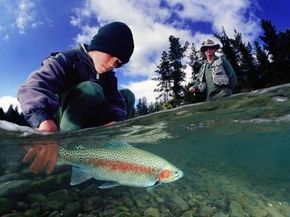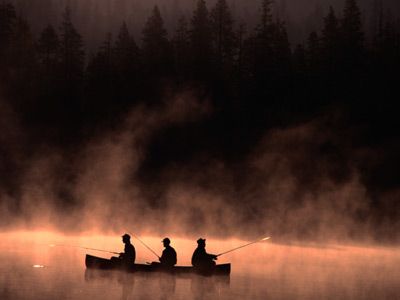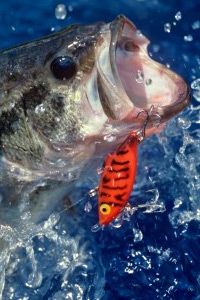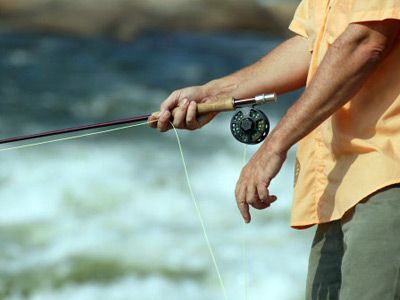Ah, a day in the life of a trout: water, relaxation, food brought close enough that you'd barely have to move. Sounds like a nice change of pace. But I have to say, I prefer having a brain bigger than the size of a quarter.
There are two large facts that make understanding the trout's lifestyle a little easier. Trout are a tad lazy, and they're less intelligent than many of their freshwater neighbors. If you apply these facts to your fishing techniques, you just may improve your success!
Advertisement
First, let's think about the lazy life of the trout. As a rule, trout prefer rivers, or water with a current, because they don't have to move to find food each day. They can find a covered area when the water's flowing moderately and just wait for their food to come to them. That's a helpful tip in finding the trout.
The fact that they're unintelligent is also important for you to remember while fishing. The trout isn't capable of processing more than one thought at a time. They just simply aren't made to multi-task [source: Cochran]. So, apply this: If you scare the trout, it will forget it wants to eat. And a fish that's scared and won't eat, certainly won't venture to the surface to take your lure.
We understand the basics, so use your complex brain to continue reading! Next, we'll learn about understanding rivers and fly fishing.
Advertisement



